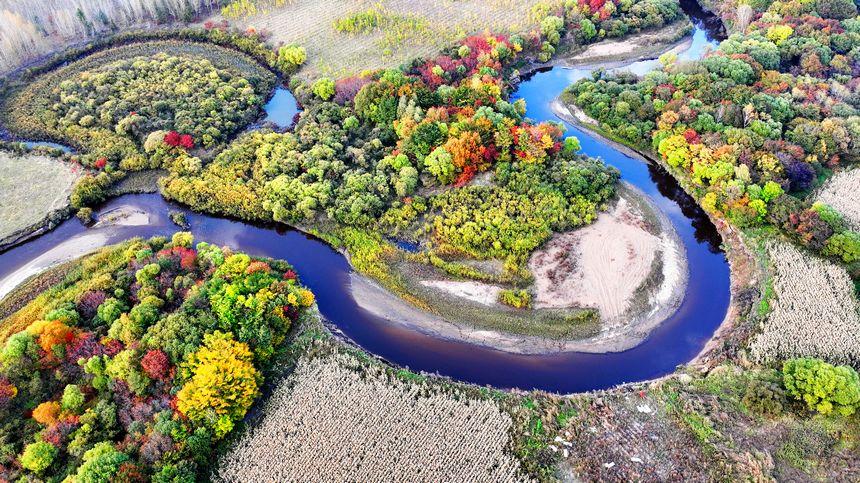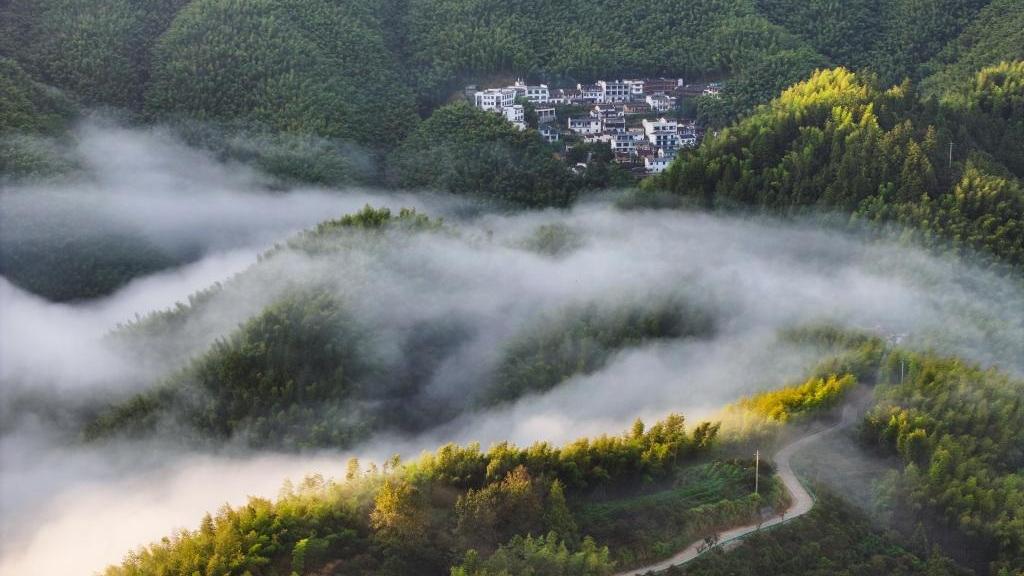In pics: remnants of Suyukou kiln in Yinchuan, China's Ningxia
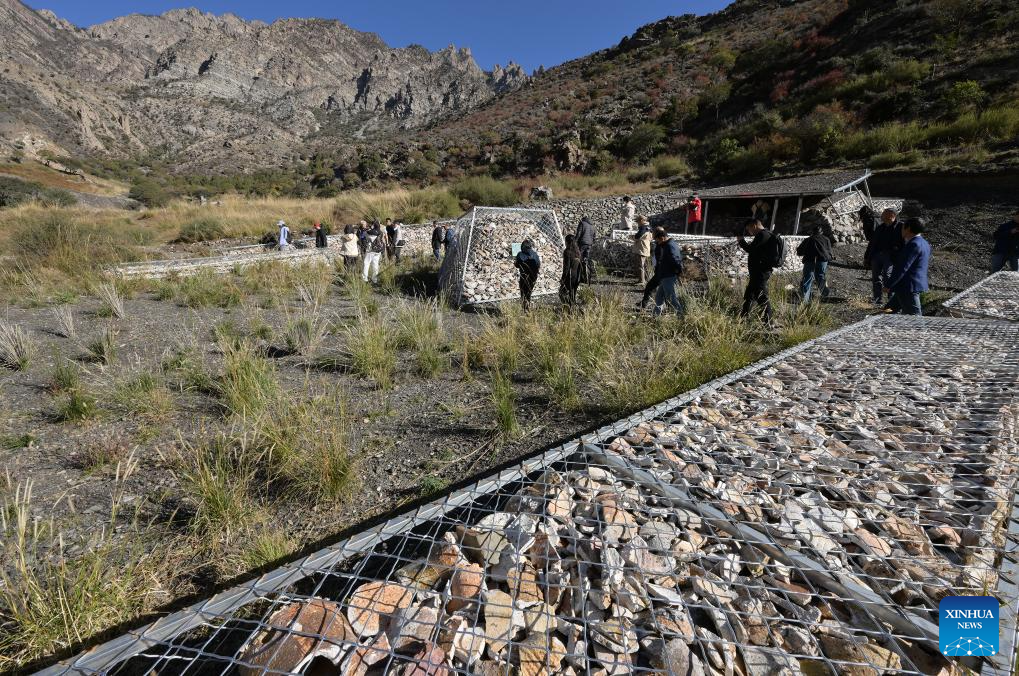
Archaeologists use felt, unearthed saggar fragments and barbed wire to backfill and protect the remains of an excavation area at the remnants of the Suyukou kiln in Yinchuan, capital of northwest China's Ningxia Hui Autonomous Region, Oct. 13, 2025. Remnants of the Suyukou kiln were discovered in 2017 in Yinchuan, capital of Ningxia, and cover an area of roughly 40,000 square meters.
From 2021 to 2025, archaeologists from the Ningxia Institute of Cultural Relics and Archaeology and Fudan University found remnants of workshops featuring eight furnaces, as well as pits where workers used to mine porcelain clay, coal, quartz, lime and other raw materials and fuels, which were needed to make porcelain.
The Suyukou site is believed to be the earliest Western Xia Dynasty kiln site found to date in China. Judging from its production scale and saggars marked with the character guan, which literally means official, archaeologists believe that the Suyukou kiln was an official kiln producing bowls, cups, plates and other daily utensils -- mainly for the royal family during the Western Xia Dynasty (1038-1227). (Xinhua/Li He)

An aerial drone photo taken on Oct. 13, 2025 shows an excavation area of the remnants of the Suyukou kiln in Helan Mountain in Yinchuan, capital of northwest China's Ningxia Hui Autonomous Region. Remnants of the Suyukou kiln were discovered in 2017 in Yinchuan, capital of Ningxia, and cover an area of roughly 40,000 square meters. (Xinhua/Wang Peng)

Archaeologists view samples of excavated porcelain at the cultural relics storage room of the archaeologist team working on the remnants of the Suyukou kiln, in Yinchuan, capital of northwest China's Ningxia Hui Autonomous Region, Oct. 13, 2025. Remnants of the Suyukou kiln were discovered in 2017 in Yinchuan, capital of Ningxia, and cover an area of roughly 40,000 square meters. (Xinhua/Wang Peng)
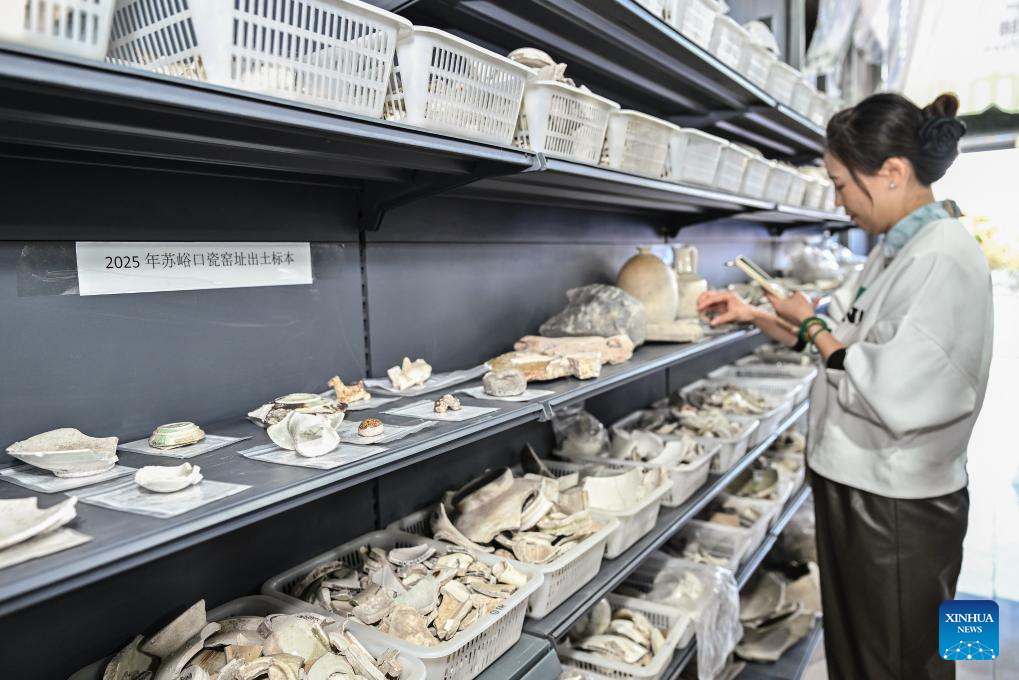
An archaeologist views samples of recently excavated white porcelain at the cultural relics storage room of the archaeologist team working on the remnants of the Suyukou kiln, in Yinchuan, capital of northwest China's Ningxia Hui Autonomous Region, Oct. 13, 2025. Remnants of the Suyukou kiln were discovered in 2017 in Yinchuan, capital of Ningxia, and cover an area of roughly 40,000 square meters. (Xinhua/Li He)

A staff member displays the fragment of a saggar marked with the character "guan," which literally means official, inside the cultural relics storage room of the archaeologist team working on the remnants of the Suyukou kiln, in Yinchuan, capital of northwest China's Ningxia Hui Autonomous Region, Oct. 13, 2025. Remnants of the Suyukou kiln were discovered in 2017 in Yinchuan, capital of Ningxia, and cover an area of roughly 40,000 square meters. (Xinhua/Li He)
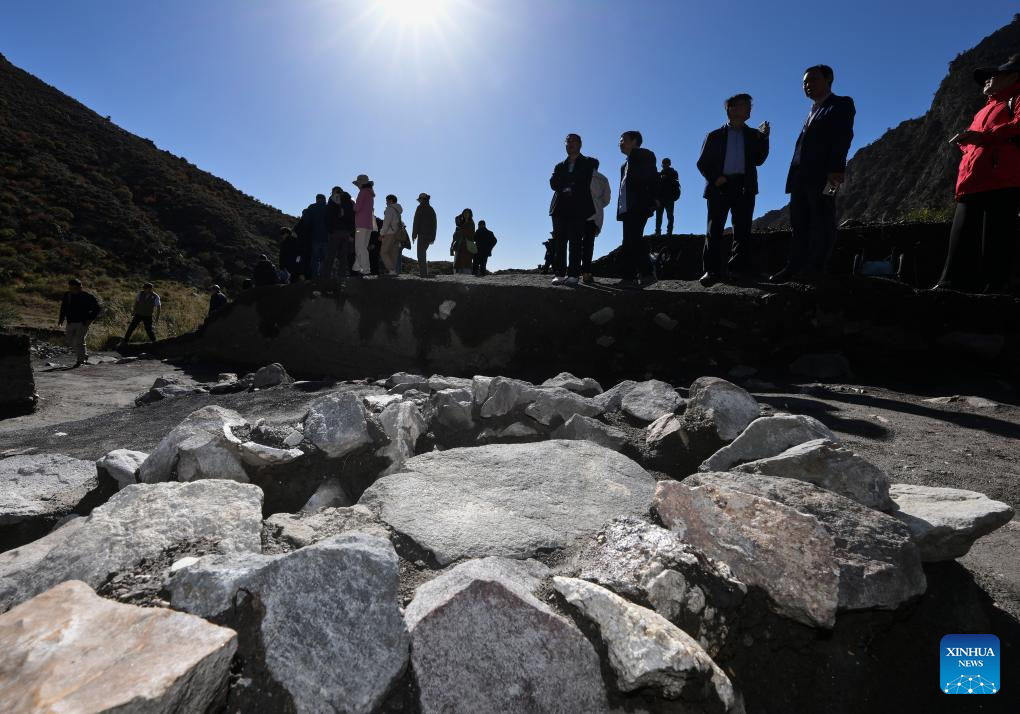
Archaeologists inspect a quartz processing site at the remnants of the Suyukou kiln in Yinchuan, capital of northwest China's Ningxia Hui Autonomous Region, Oct. 13, 2025. Remnants of the Suyukou kiln were discovered in 2017 in Yinchuan, capital of Ningxia, and cover an area of roughly 40,000 square meters. (Xinhua/Li He)

A staff member displays excavated porcelain fragments inside the cultural relics storage room of the archaeologist team working on the remnants of the Suyukou kiln, in Yinchuan, capital of northwest China's Ningxia Hui Autonomous Region, Oct. 13, 2025. Remnants of the Suyukou kiln were discovered in 2017 in Yinchuan, capital of Ningxia, and cover an area of roughly 40,000 square meters. (Xinhua/Li He)

A staff member displays excavated white porcelain tiles inside the cultural relics storage room of the archaeologist team working on the remnants of the Suyukou kiln, in Yinchuan, capital of northwest China's Ningxia Hui Autonomous Region, Oct. 13, 2025. Remnants of the Suyukou kiln were discovered in 2017 in Yinchuan, capital of Ningxia, and cover an area of roughly 40,000 square meters. (Xinhua/Li He)
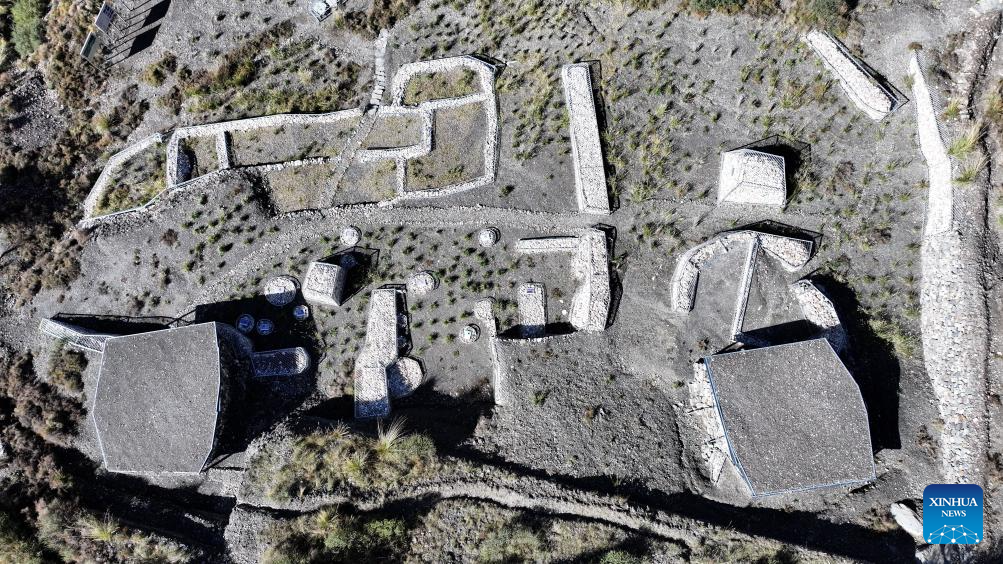
An aerial drone photo taken on Oct. 13, 2025 shows an excavation area of the remnants of the Suyukou kiln in Helan Mountain in Yinchuan, capital of northwest China's Ningxia Hui Autonomous Region. Remnants of the Suyukou kiln were discovered in 2017 in Yinchuan, capital of Ningxia, and cover an area of roughly 40,000 square meters. (Xinhua/Wang Peng)

Archaeologists view samples of excavated porcelain at the cultural relics storage room of the archaeologist team working on the remnants of the Suyukou kiln, in Yinchuan, capital of northwest China's Ningxia Hui Autonomous Region, Oct. 13, 2025. Remnants of the Suyukou kiln were discovered in 2017 in Yinchuan, capital of Ningxia, and cover an area of roughly 40,000 square meters. (Xinhua/Li He)
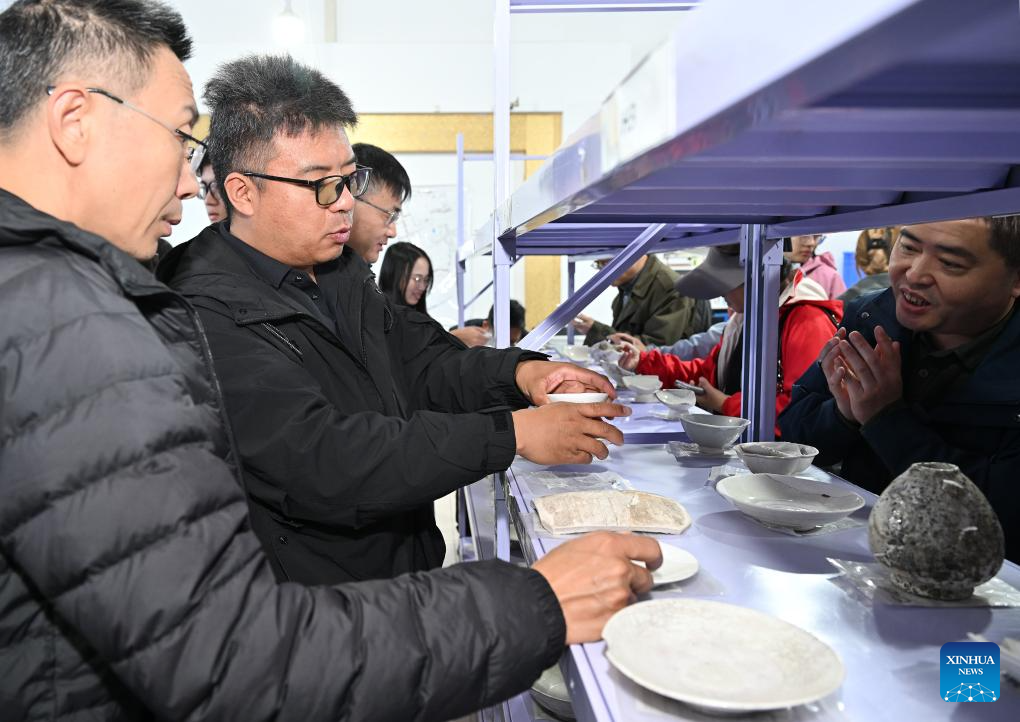
Chai Pingping (2nd L) introduces the progress in porcelain excavation to experts at the cultural relics storage room of the archaeologist team working on the remnants of the Suyukou kiln, in Yinchuan, capital of northwest China's Ningxia Hui Autonomous Region, Oct. 13, 2025. Remnants of the Suyukou kiln were discovered in 2017 in Yinchuan, capital of Ningxia, and cover an area of roughly 40,000 square meters. (Xinhua/Li He)
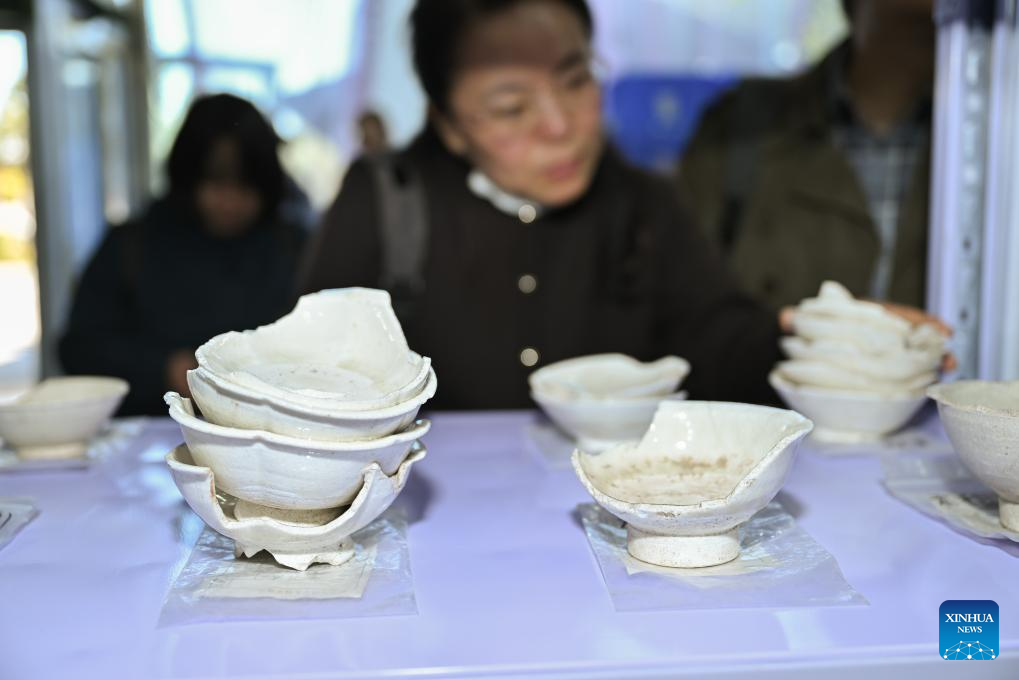
This photo shows samples of excavated white porcelain wares displayed at the cultural relics storage room of the archaeologist team working on the remnants of the Suyukou kiln, in Yinchuan, capital of northwest China's Ningxia Hui Autonomous Region, Oct. 13, 2025. Remnants of the Suyukou kiln were discovered in 2017 in Yinchuan, capital of Ningxia, and cover an area of roughly 40,000 square meters. (Xinhua/Li He)
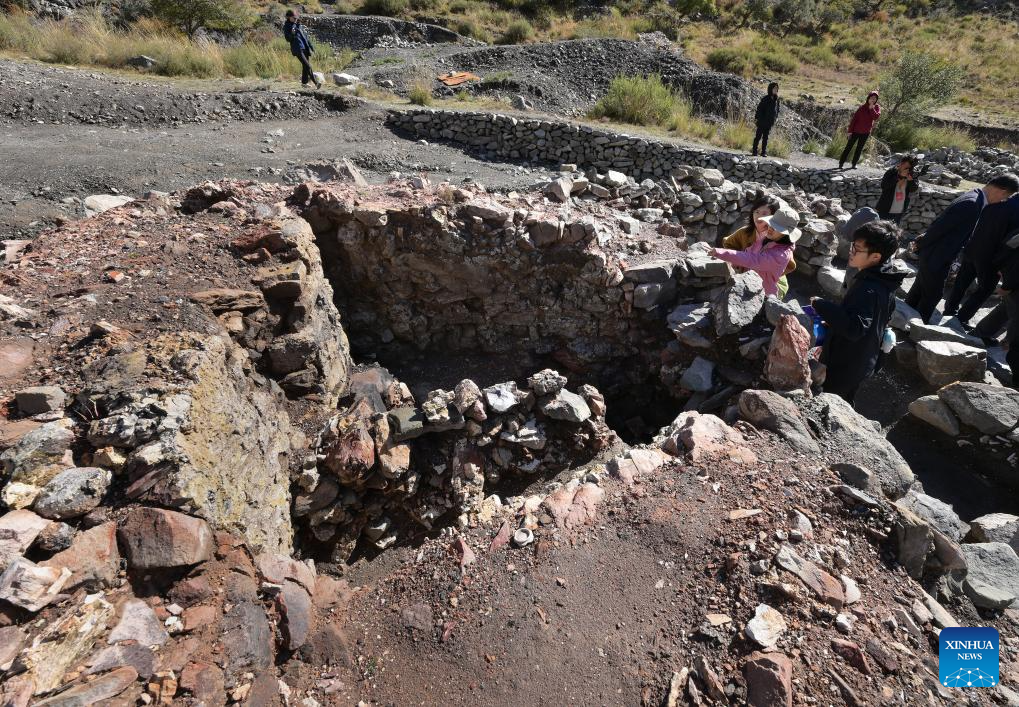
Archaeologists inspect a furnace at the remnants of the Suyukou kiln in Yinchuan, capital of northwest China's Ningxia Hui Autonomous Region, Oct. 13, 2025. Remnants of the Suyukou kiln were discovered in 2017 in Yinchuan, capital of Ningxia, and cover an area of roughly 40,000 square meters. (Xinhua/Li He)
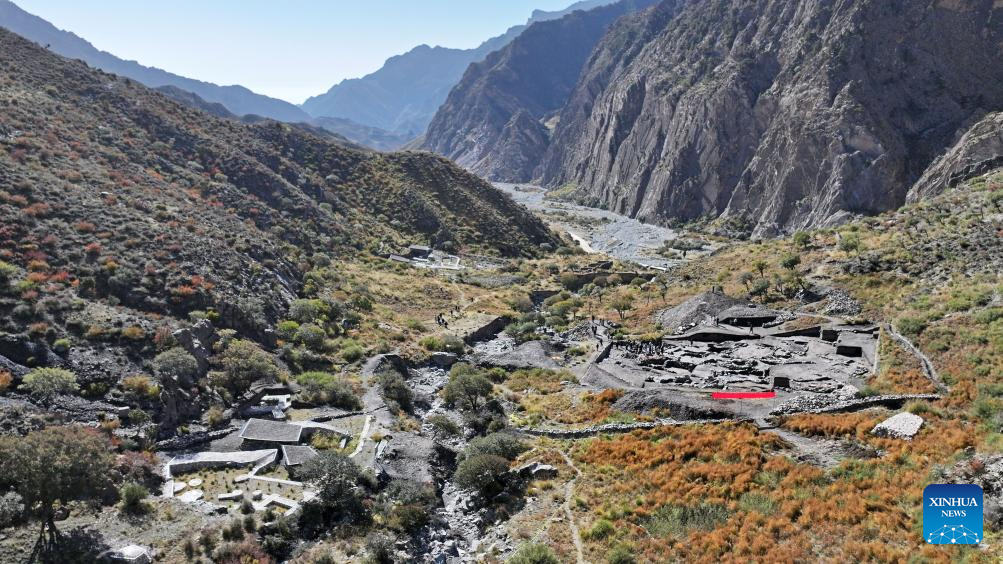
An aerial drone photo taken on Oct. 13, 2025 shows a view of the remnants of the Suyukou kiln in Helan Mountain in Yinchuan, capital of northwest China's Ningxia Hui Autonomous Region. Remnants of the Suyukou kiln were discovered in 2017 in Yinchuan, capital of Ningxia, and cover an area of roughly 40,000 square meters. (Xinhua/Wang Peng)
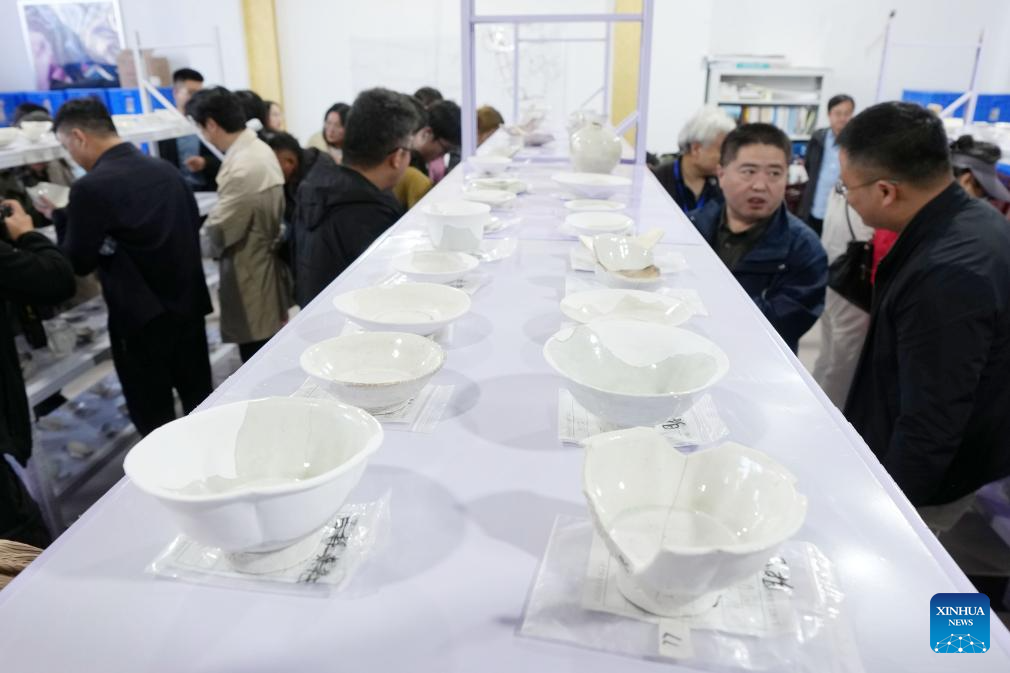
Archaeologists view samples of excavated porcelain at the cultural relics storage room of the archaeologist team working on the remnants of the Suyukou kiln, in Yinchuan, capital of northwest China's Ningxia Hui Autonomous Region, Oct. 13, 2025. Remnants of the Suyukou kiln were discovered in 2017 in Yinchuan, capital of Ningxia, and cover an area of roughly 40,000 square meters. (Xinhua/Wang Peng)

Archaeologist Chai Pingping introduces the porcelain firing process in front of the remains of a workshop at the remnants of the Suyukou kiln in Yinchuan, capital of northwest China's Ningxia Hui Autonomous Region, Oct. 13, 2025. Remnants of the Suyukou kiln were discovered in 2017 in Yinchuan, capital of Ningxia, and cover an area of roughly 40,000 square meters. (Xinhua/Li He)
Photos
Related Stories
- Archaeological breakthrough helps trace origins, formation of Wu and Yue cultures
- Minning Town in NW China's Ningxia thrives amid ecological transformation
- New archaeological findings reveal colorful bronze wares dating 3,000 years
- Morning tea, characteristic culinary culture in Wuzhong City, NW China's Ningxia
- Scenery of wetlands in Yinchuan, China's Ningxia
Copyright © 2025 People's Daily Online. All Rights Reserved.








